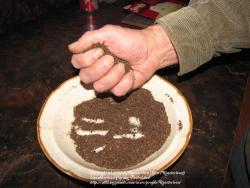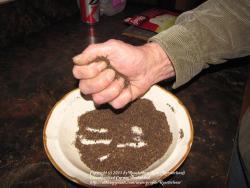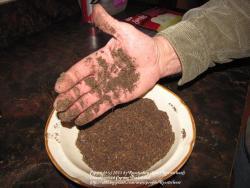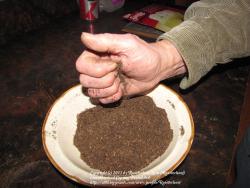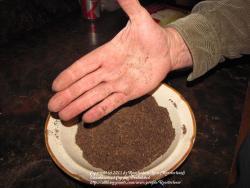
I have to say, I am even more "brave" than Lorn, due to my laziness. Though my mediums may start with a pasteurized potting mix (but not for scaling), the additions of sand, grit, perlite, peat, vermiculite, etc. are not treated. I would definitely say, however, that if there is a time for a "sterile" type medium, scaling is it. I am far more particular with scales then I am with seeds!
Usually, I prefer not using tweezers, but whatever works best for you. I think it is much easier to gauge the pressure being used to pick up things, so you don't accidentally pinch to hard and damage the lily. Always be gentle; that's the key.
---
I don't do nearly as much scaling as many participants here, so I don't have the quantity of experience as some do. But for myself, I've never had bulblets start in mid-scale, as the the small white bulblet in this pic of yours, Calin:
http://garden.org/pics/2013-01...
I'd be interested to here other people's experiences in this regard. Of course, the typical origin of scale bulblet production is the basal cut end of the scale.
I am brainstorming a few possibilities reasons for Calin's results:
---- The vigor of hybrids may very well increase the overall "randomness" of scale bulblet initiation.
---- A damaged surface is a probable impetus.
---- More favorable environmental conditions
above the soil surface rather than below. Take Lorn's suggestion of a
barely moist medium for scaling seriously. Although obviously not completely fatal, it looks to me like the mix you used Calin, hold too much moisture for scaling purposes. When you go digging, we all would love to here of your findings. What is happen below the soil surface, when a scale has the option to grow in either condition?
Adventures with scaling .... what a great name for this thread!
